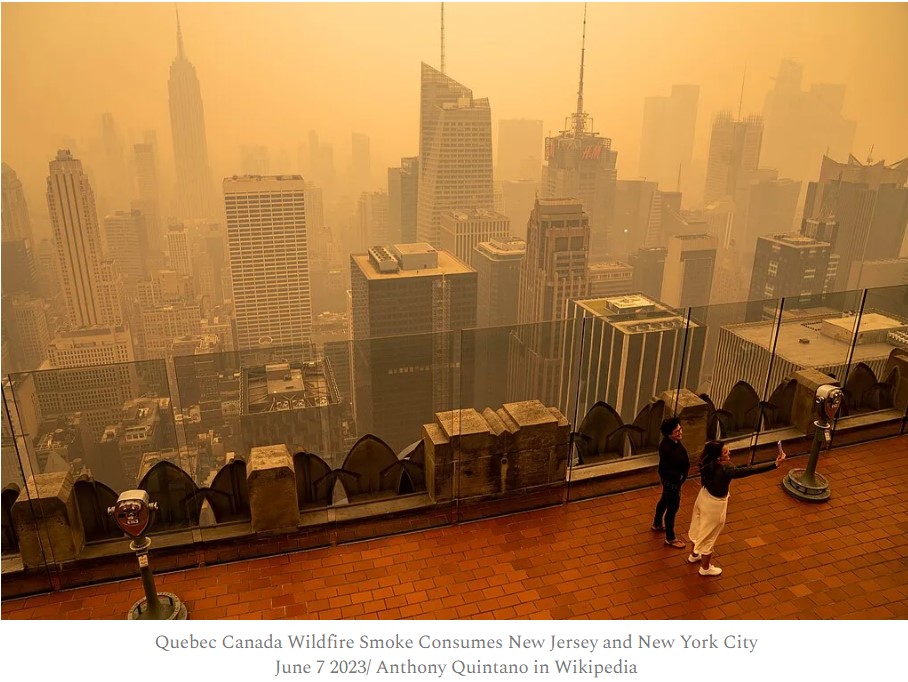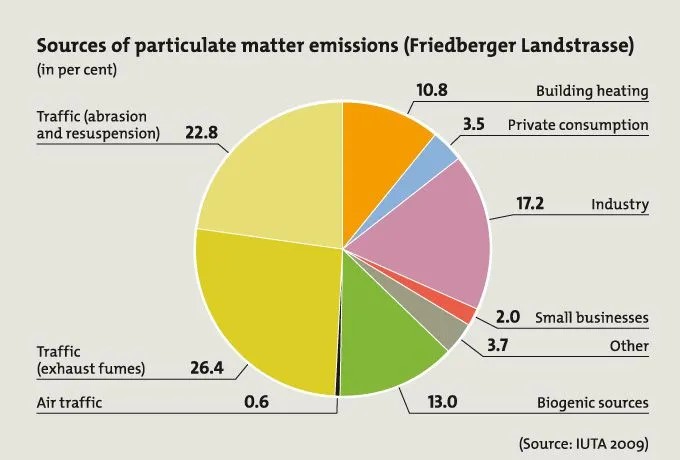Particulate Pollution Is Worse Than We Knew
I believe most people will ignore this headline. They will do so because it is not as obvious to them as smoke from a fire or smog in the cities. They begin to notice (still not see) the impact of it when they are coughing, sneezing, breathing is labored, etc. At that point, it is a matter of time with your health.
Particulate pollution Is Worse Then We Knew and Is Damaging ‘Every Organ in the Body’
by Lloyd Alter
Carbon Upfront!
Recent research has linked particulate pollution from wildfires with significant increases in dementia. I will be writing about this study tomorrow, but an LA Times article covering the studies quoted one of the authors:
“We increasingly see that PM2.5 is tied to virtually every health outcome we look at,” said study author Joan Casey, associate professor of public health at the University of Washington.
That statement reminded me of a post, now deleted, that I wrote a few years ago, noting as the title said that particulate pollution was “damaging every organ in the body.” I reconstruct it here from my archives:
Those little PM2.5 things go everywhere and are killing us. We have to stop them at the source.
For years, we have talked about air pollution being bad for our health, but nobody ever explained why or how. It was often called “smog”, which was a 1905 portmanteau of smoke and fog, basically visible pollution. But the science of what is actually the really harmful component of pollution has been evolving.
Even Wikipedia notes that the major sources from traffic emissions are carbon monoxide, nitrogen oxides, VOCs. “Transportation emissions also include sulfur dioxides and particulates matter but in much smaller quantities than the pollutants mentioned previously.” But as we have noted before on TreeHugger, the science now gives much more significance to that particulate matter, most notably the really small stuff, the particulate matter with a diameter of less than 2.5 μm, known as PM2.5. A recent study, Air Pollution and Noncommunicable Diseases, concludes:
[PM2.5] is the fifth leading risk factor for death in the world, accounting for 4.2 million deaths and > 103 million disability-adjusted life years lost according to the Global Burden of Disease Report. The World Health Organization attributes 3.8 million additional deaths to indoor air pollution. Air pollution can harm acutely, usually manifested by respiratory or cardiac symptoms, as well as chronically, potentially affecting every organ in the body.
The biggest source of PM2.5 is always smoking and first and second hand. Much of the understanding of the danger of PM2.5 was probably lost in the haze of cigarette smoke. But now, as people smoke less, scientists are realizing that the campfire might have been almost as dangerous (and we won’t even mention the carbonized hot dogs).
Damian Carrington of the Guardian does a particularly dramatic review of this study, showing how it affects our lungs, heart, and brain, because the particles are so small that they get into our bloodstream and even the nervous system:
“Animal studies have shown they can even travel right up the olfactory nerve into the brain.” An emerging area of research also suggests air pollution can affect how genes function, he [Prof Dean Schraufnagel] added.
They can cause stroke and dementia; they reduce fertility and increase miscarriages. Of particular interest to the Republicans running the USA might be “the unborn are also in the mix. A recent study finding pollutants in the placentas that nourish foetuses. Air pollution is also strongly linked to low birthweights for babies, which has lifelong consequences.”
You wouldn’t know this in the USA, where the EPA actually disbanded the Particulate Matter Review Panel that was going to determine what a safe level of particulates actually is. They don’t want to know, or don’t believe it. According to NPR, the head of the Clean Air Scientific Advisory Committee, appointed by the current government, “said they do not agree that breathing air polluted with soot can lead to an early death.”
“[Committee] members have varying opinions on the adequacy of the evidence supporting the EPA’s conclusion that there is a causal relationship between [particulate matter] exposure and mortality,” said Cox.
There are many reasons why the American government [during the Trump administration] would not want to get worked up about PM2.5; the main sources are power generation, home heating, cars and trucks, and forest fires, which are also the main sources greenhouse gases. America is not in the business of reducing power generation from coal or the sale of gas-guzzling cars and trucks. And many Americans don’t take the climate crisis seriously. But they do care about their health.
What can we do about it?
There are a million different studies describing what the worst emitters of PM2.5 are, but in cities in North America, it appears that the two biggest are heating and driving. And almost half of the Particulates from driving come from tire wear, road wear and brakes, which is pretty much proportional to the weight of the vehicles, which is another good reason to limit SUVs and pickup trucks in cities and promote lighter, smaller cars. And of course, get rid of diesels, go electric, promote alternatives like bikes and e-bikes, and better transit.
The other source is heating, where as we have noted before, we have to electrify everything. You do not want particulates coming from your furnaces and water heaters and you certainly don’t want them coming from your gas stove, where in fact studies show that “a domestic stove top emits a larger amount of very small particles since their post-oxidization is not possible.”
And alas, as much as I love a fireplace and a wood-fired bagel or pizza, now that we have learned about PM2.5 and how much comes from wood smoke, I am afraid that it is time to let go of them.
And of course, it would be nice if we could generally lower the world’s temperature to prevent forest fires.
We have all been wrestling with how to convince people that the climate crisis is real, but it is a tough sell. But who really wants to accept than their kid is going to be born underweight or that they are going to die of COPD, cancer or dementia because they wanted to drive their giant Denali? This isn’t some vague future event, it is happening every time you breathe.





oh heck, we don’t have to worry about this. add a little iron oxide to the oceans and a little sulfur dioxide to the air.